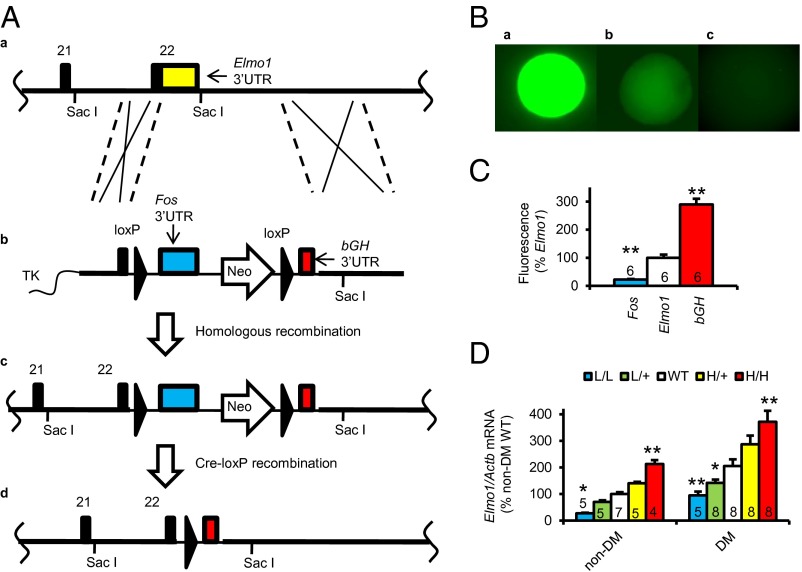Fig. 1.
Generation of Akita diabetic mice having five graded expression levels of Elmo1. (A) The gene-targeting strategy. (a) The target locus, Elmo1, into which an exogenous 3′-untranslated region (3′-UTR) is introduced by homologous recombination. Coding sequences and the endogenous 3′-UTR of the Elmo1 gene are shown as black and yellow columns, respectively. (b) The targeting vector contains a loxP sequence, the c-Fos 3′-UTR (blue), a Neo gene with the MC1 promoter (pMC1), loxP, and the 3′-UTR of the bovine growth hormone gene (bGH 3′-UTR; red). TK, thymidine kinase gene. (c) The resulting locus after homologous recombination; the Elmo1 gene is now in its low-expression form (Elmo1L) because the stability of its mRNA is now controlled by the destabilizing 3′-UTR of Fos. (d) The resulting locus after Cre-lox P recombination; the Elmo1 gene is now in its high-expression form (Elmo1H) because the stability of its mRNA is now controlled by the stabilizing 3′-UTR of bGH. (B) In vitro comparison of the effects of 3′-UTRs and their G-rich elements (GREs) on expression of a green fluorescent protein gene. Fluorescence of colonies with the 3′-UTRs and GREs of bGH, Elmo1, and Fos is shown. (C) Mean fluorescence levels of the single cells with the 3′-UTR and GRE of bGH, Elmo1, and Fos from different colonies. *P < 0.05, **P < 0.01 vs. Elmo1. (D) The mRNA levels of Elmo1 in the kidney of the nondiabetic and Akita diabetic mice having five graded expression levels of Elmo1 at age 40 wk. *P < 0.05, **P < 0.01 vs. Elmo1 WT genotype.

